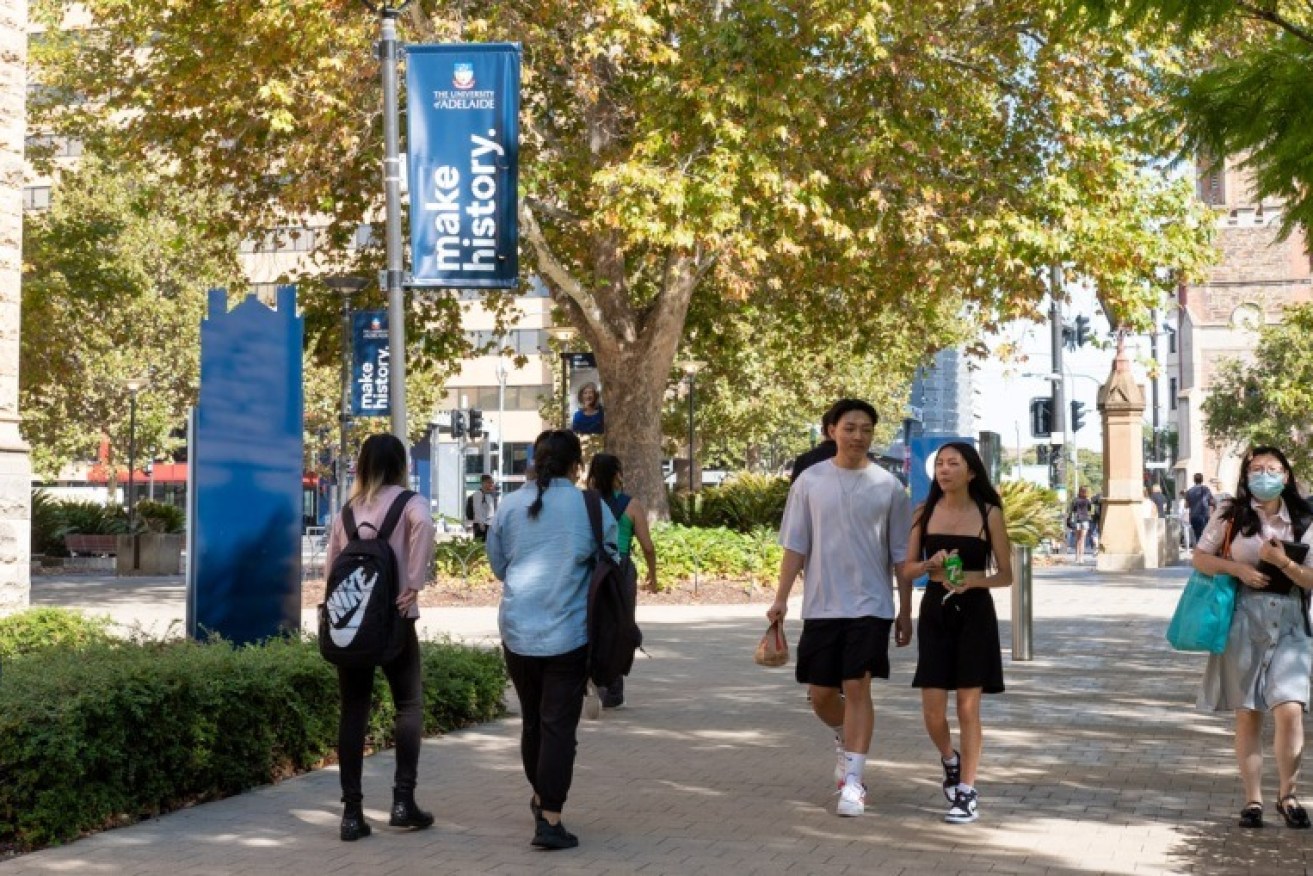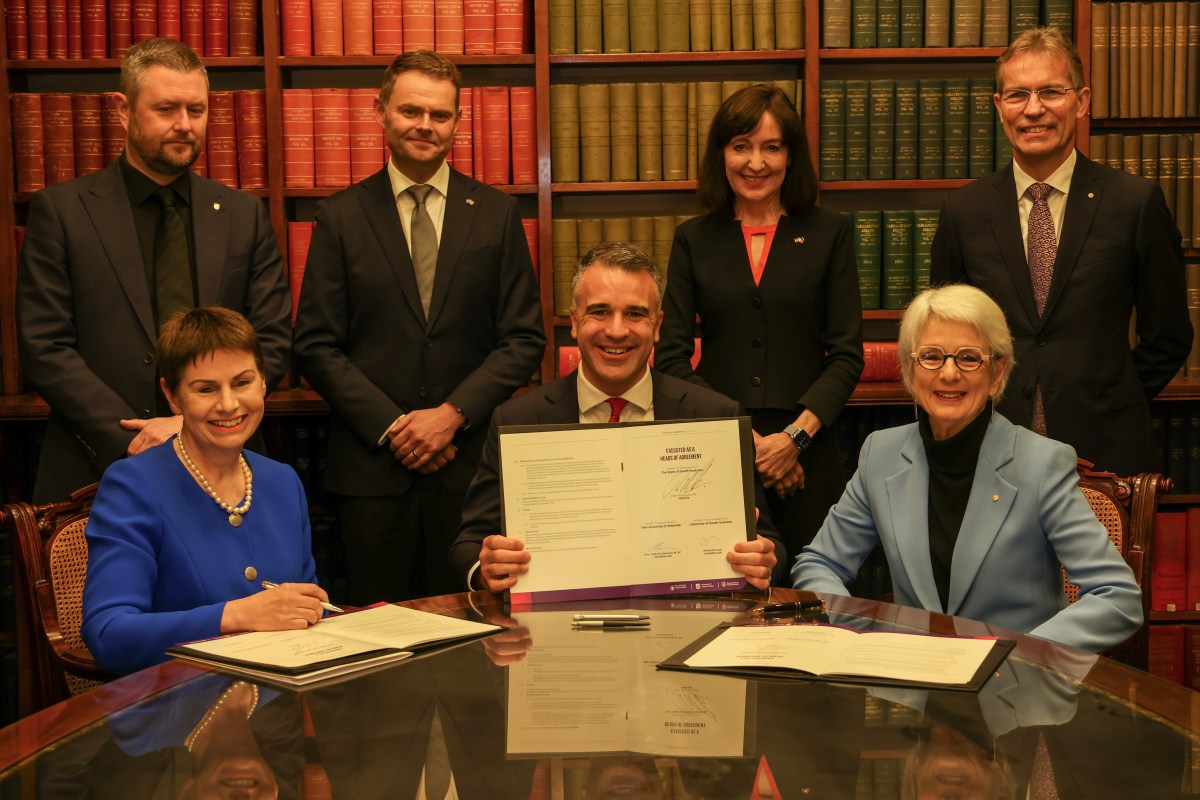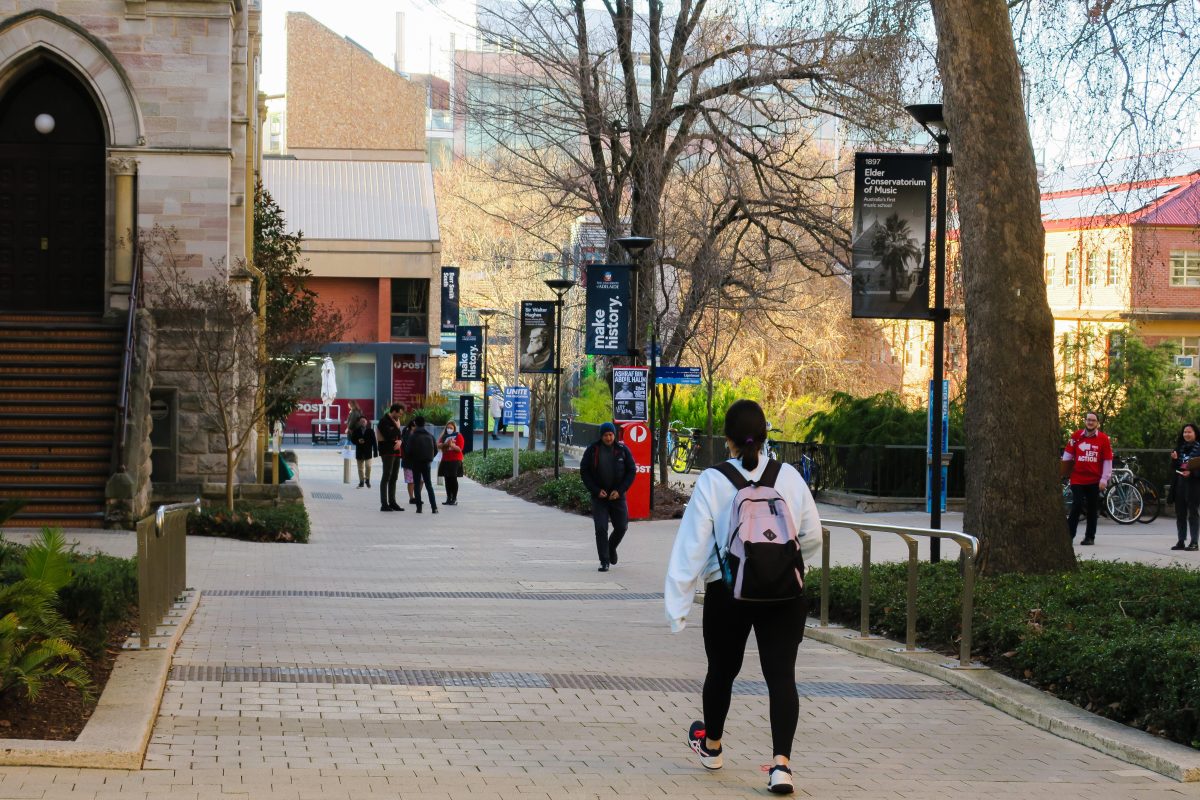National university review’s implications for SA merger
A federal review into Australia’s higher education system says merging the universities of Adelaide and South Australia is an “interesting opportunity” for reform – but warns that pursuing economies of scale is not “necessarily in line with the needs of students”.


University of Adelaide's City East campus. Photo: supplied/CityMag
An expert panel looking at Australia’s university sector released an interim report on Wednesday with five recommendations for higher education reform.
The federal review, known as the Australian Universities Accord and chaired by former University of Adelaide vice-chancellor Mary O’Kane, also flagged 70 other actions for public comment ahead of a final report scheduled for the end of the year.
The interim report briefly mentions the recently agreed merger between the University of Adelaide and University of South Australia.
The two universities signed an agreement on July 2 to merge their institutions into a new Adelaide University with nearly $450m in taxpayer support, pending legislation passing state parliament.
The Accord panel describes the exploration of university mergers in South Australia and Western Australia as “interesting opportunities” and flags that its final report in December may offer “supporting recommendations” about the merger.
The interim report also warned that changes to higher education systems need to be “carefully managed”.
“The current exploration of mergers of universities in both South Australia and Western Australia are interesting opportunities, partly driven by objectives of state governments to capitalise on scale to deliver better outcomes for their jurisdictions,” the report states.
“While the outcomes of these processes are still to be finalised at the time of writing, it has reignited important debate that could lead to stronger state and national system outcomes.”
The report foreshadows that “all institutions will need to evolve over the coming decades” but says this will be different depending on the university.
“Some (will evolve) through rapid innovation and growth, while others may do so at a more measured pace, and some may even reduce in scale to some extent,” the report states.
The Malinauskas Government and the merger universities say the new Adelaide University will educate more than 70,000 students by 2034 – around 13,000 more than the University of Adelaide and UniSA currently educate combined.
One of the few levers available is to increase scale, and to increase provision of courses that can be managed to generate a surplus – neither of which is necessarily in line with the needs of students and will not necessarily address skills shortages
They also say the merger will attract 6000 extra international students to South Australia.

Premier Peter Maliauskas holding up the merger agreement signed between the University of Adelaide, UniSA and state government on July 2. Photo: Tony Lewis/InDaily
The Accord panel warns about the impact large student cohorts can have on the student experience.
“Australia’s higher education system is incentivised to maximise the intake of international students and produce large student cohorts,” the report states.
“This can be detrimental to the student experience for both international and domestic students, with large class sizes potentially diminishing students’ ability to connect with their peers and make lasting relationships throughout their studies.
“This is exacerbated when there is a lack of diversity within classes, leading to cohorts of international students feeling further isolated.”
The report also cautions that some universities have become “over-reliant” on international student revenue.
The panel argues that a “rethink of how university operations are financed is urgently needed” given that research funding is, in part, dependent on cross-subsidisation from international student revenue.
“The growth of international student revenue has become so important to the sector that its volatile nature is now a risk to our national research effort,” the report states.
“Some Australian universities benefit from substantial endowments, high international rankings which help attract larger numbers of international students, and valuable property holdings.
“However, many do not have access to these benefits and face challenges to their financial stability. As a result, many universities are in a precarious financial position.
“One of the few levers available is to increase scale, and to increase provision of courses that can be managed to generate a surplus – neither of which is necessarily in line with the needs of students and will not necessarily address skills shortages.”
The growth of international student revenue has become so important to the sector that its volatile nature is now a risk to our national research effort.
The findings of the interim report echo some of the issues identified by the University of Adelaide in its submission to the Accord panel in April.
The submission, which also called for changes to Australia’s student debt system, predicted the market for international students faces “further shocks” over the next 20 years.
It said the Accord reforms should be focused on shifting international education towards “diplomacy and diversity and away from a system that relies on a high volume, high tuition-fee model”.
“Research funding cannot continue to be dependent on cross-subsidisation from teaching and international students,” the University of Adelaide said.
“In terms of the latter, COVID-19 has taught us that this is a high-risk strategy and cannot be relied upon in the long term as traditional source countries develop their own capacity and eventually become competitors.”
In 2021, the University of Adelaide blamed the COVID-induced shortfall of international students for having to merge five faculties into three and consider cutting 130 jobs.

Students at the University of Adelaide. Photo: Jason Katsaras/InDaily
The university said in its accord submission there is a “misalignment between the ideal role that international education should play and the commercial drivers that influence current practice”.
“The current model of international education has been under pressure and is likely to sustain further shocks over the next two decades,” the submission states.
“New modes of delivery, the role of international education and how we educate global citizens in a digital world are all concepts worth exploring in our efforts to future-proof the system.”
The Malinauskas Government has committed $30m over three years for the newly merged Adelaide University to invest in measures to attract international students.
The two universities’ merger transition plan states that they want to launch Adelaide University’s brand by the end of June 2024.
The brand launch will be “initially focusing on supporting international student recruitment activities”, the transition plan states.
University of Adelaide vice-chancellor Peter Høj told a staff forum earlier this month that merging with UniSA would “bolster us against a future where we perhaps cannot benefit from as many international students as we do now”.

University of Adelaide vice-chancellor Peter Høj. Left photo: Tony Lewis/InDaily. Image: Tom Aldahn/InDaily
“While we loving having our international students in Australia, it is also true that the current university sector viability is very much dependent on the international students being here,” he told staff.
“Realistically, if we are to think a couple decades forward, many of the countries from which our wonderful international students currently come will have been able to build their own educational capability to serve their people really well.
“We need to be in a position to weather such a potential downturn in revenue from international students and still have a substantial university in South Australia.”
The accord panel’s interim report on Wednesday recommended five “priority actions” to reform Australia’s university sector.
This includes a recommendation for national cabinet to “immediately engage” with state governments to improve university governance and ensure governing councils have “additional involvement of people with expertise in the business of universities”.
- Establish up to 20 additional regional university study hubs and up to 14 suburban hubs, building on the 34 already in place.
- Abolish the 50 per cent pass rule which has had a disproportionately negative impact on students from poor backgrounds and from the regions, and require increased reporting on student progress.
- Extend demand-driven funding to all First Nations students who are eligible for the course they apply for, not just Indigenous students in regional and remote Australia.
- Extend the Higher Education Continuity Guarantee for a further two years to universities as the accord process rolls out.
Federal Education Minister Jason Clare on Wednesday pledged the Albanese Government would immediately act on all five “priority” recommendations.
-With AAP




